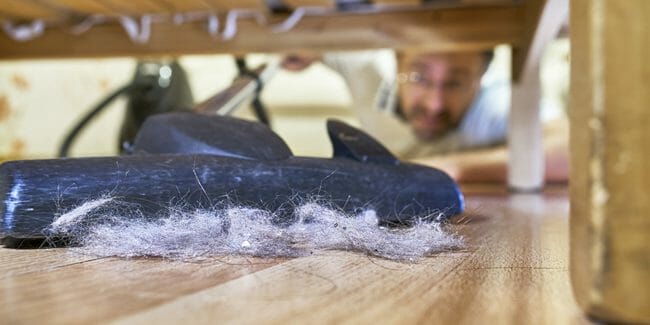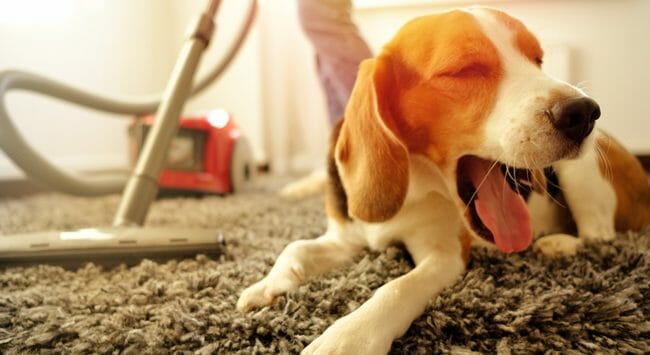As a general rule of thumb, your pet vacuum cleaner will start giving you certain signals long before something actually breaks or deteriorates beyond repair. All you have to do is learn how to spot these not-so-subtle signs and take necessary actions to prolong the overall lifespan of your unit. With proper maintenance, the top pet vacuums can last up to 8 years.
One of the most common indicators that something is wrong with your pet vacuum is reduced effectiveness, such as lower suction power. This common problem can signal several potential issues, so let us go over some useful tips on how to counteract them before they even happen.

Pay Attention!
Pet vacuum cleaners are not designed to collect wood splinters, socks, coins, and many other common household items people regularly think they can get away with. If you see something on your floor and start wondering whether or not your pet vacuum can handle it, chances are it cannot. Anything but pet hair and similar materials will most likely result in minor or major damage that stacks up over time and ends up deteriorating vital components of your vacuum cleaner, so pay close attention to what you are vacuuming and always pick up the aforementioned objects manually.
Change The Bag
Naturally, this tip does not apply to bagless models. With that out of the way, people usually allow their vacuum bags to overfill, which not only leads to reduced performance but also puts a huge strain on the motor unit itself. Therefore, you should replace the bag before it gets completely filled in order to make your pet vacuum last longer. Keep in mind that you should put in a clean unused bag rather than just emptying the old one and putting it back. Used vacuum bags have usually lost all their filtering properties and we definitely do not recommend recycling them.
Clean/Change The Filters
Even if you own a bagless pet vacuum, there is still stuff to check and clean. Instead of disposable bags, bagless vacuums use more filters that should be checked on a monthly basis at the very least. The filters are there to trap any dirt & debris that gets past the designated cup. Similarly to overfilled bags, dirty filters can cut suction down and cause the motor unit to start overheating.
Depending on the type of filter, you can either wash and reuse them or replace them completely following the manufacturer’s instructions regarding filter usage and maintenance. Note that many bagged models also come with secondary filters so you should pay close attention to those as well.

Check The Belt
Basically, the belt is as important as the motor unit itself since your pet vacuum cleaner will definitely not be able to function without it, at least not on any carpeted floors.
If your model utilizes a rubber belt, you should periodically check for any potential slippage (very important), melting spots, and cracks. Note that the rubber also tends to stretch even if you never use your pet vacuum. The belts should be changed around 3 times every year.
When it comes to “permanent” belts, you should also perform a thorough check at least once a month to spot any potential wear and remove debris from the belt channel. Even though cog belts are usually called “permanents,” they do get damaged over time. Unlike their rubber counterparts, however, they do not stretch.
Clean The Brushroll
The motor and the brushroll basically do all the work, so you should check the bristles regularly for any potential build-ups, including pet hair, carpet fuzz, and threads. You should also pay attention to the brushroll bearings, which need to be completely hair and dirt-free in order to spin freely. Note that you should not try to lubricate the bearings on your own no matter what numerous online sources tell you. Even if you could get the lubricant in there, you would only speed up the dirt build-up and reduce their overall lifespan of your vacuum.
